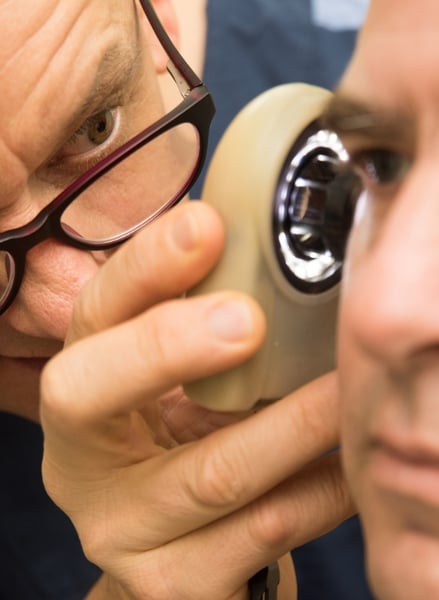Moles are small spots on your skin. Almost everyone has them, and most are harmless. But some...
_page1_image9-jpg-3.jpeg?height=200&name=ABCDEFG%20melanoma%20guide__Al%20Nour%20(2)_page1_image9-jpg-3.jpeg)
A skin cancer check is a full-body skin examination and assessment of your skin from head to toe.
The independent doctors practising at National Skin Cancer Centres have completed advanced training in skin cancer medicine and will thoroughly inspect your skin and examine any moles, freckles or bumps.

The skin cancer check takes between 15 to 30 minutes. The doctor will examine your head, face, neck torso, legs, feet, toes, arms, hands, and fingers. You will be required to undress to your underwear and a gown or blanket can be provided for your comfort. Genital areas are not routinely examined; however, skin cancers can develop in any area of the body and you should inform the doctor about any suspicious spots under your underwear. The doctor will only check these areas if you request them to do so.
Your skin will be examined with a dermatoscope, which is a special skin microscope, which allows the doctor to see beneath the skin to make a decision regarding a suspicious skin lesion or mole. The examination is completely painless. If the doctor finds a suspicious spot, they might take a photograph to be recorded and analysed, and they might take a biopsy which is a sample of the skin.
Australia is the skin cancer capital of the world, with over one million skin cancers treated each year - more than 100 every hour! People living in Australia may be at even higher risk if they:
It is important to get your skin checked regularly by a qualified medical professional – at least once a year, or every few months if you are at high-risk of skin cancer or have been diagnosed with skin cancer previously.
Routine self-examinations are also a good way to monitor your own skin in between skin checks, but should not be relied upon to catch every suspicious spot.

Total body photography is recommended for some patient groups for early and accurate skin cancer diagnosis. In some clinics, this service is automatically included as part of your full-body skin cancer check.
About 99 per cent of skin cancers are curable if detected and treated early. A regular skin cancer check is your best defence against complex surgeries, costly procedures, and even death.
The doctors at National Skin Cancer Centres have a wealth of experience, skills and recognised certifications in skin cancer care, and utilise the latest tools in skin cancer detection and treatment.
An Australian is diagnosed with melanoma every 30 minutes. Living in the skin cancer capital of the world, experts recommend that all Australians get a regular skin cancer check.
Please bring a valid Medicare card and pension card (if you have one) to each consultation. If it is your first visit, please bring any documentation relating to your skin cancer history.
Please wear loose, comfortable clothing and slip-on shoes (not lace-up shoes) to your skin cancer check. This helps to reduce the time you spend getting undressed so that you have more time with the doctor. Please remove any makeup and nail polish, and be prepared to let your hair out.
A skin cancer check can take between 15 and 30 minutes, depending on your skin type and the number of moles you have. Make sure you tell the doctor about any spots or moles which are sore, changing, abnormal or new.
The doctor will tell you straight away if your skin cancer check uncovers any moles or spots which require a biopsy, which means that a small sample of skin is removed for further testing. After it has been removed, the sample is sent to a pathology laboratory to confirm diagnosis. Receiving the test results can take up to several days. The results and treatment options will be discussed with you at length at your follow-up appointment.
In most cases, when found early, skin cancer can be easily and successfully treated with surgery. Most skin cancers are cured once they are removed. Other non-surgical treatments may be used but this will depend on the type of skin cancer found.
You can choose to come back, but if you prefer, we will phone you to follow up on any results.
Depending on your level of risk for developing skin cancer, your doctor may recommend regular follow-up skin cancer checks. The frequency for follow-up skin checks can vary from every few months, to once every year or two. We will send you regular skin check reminders, but it is also a good idea to keep your own record of when a follow-up skin check is due.
Medical and cosmetic skin concerns addressed by certified practitioners.
Expert consultations and safe treatments delivered in a medical facility.
Comprehensive approach to overall skin health and personalised treatments.
Patient-centred focus to achieve healthy, beautiful skin for life.
